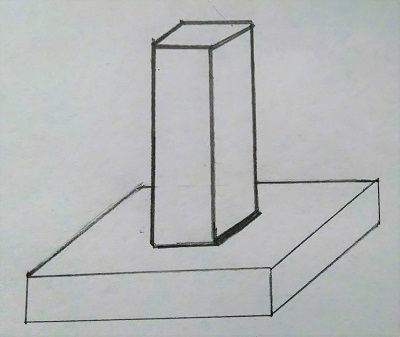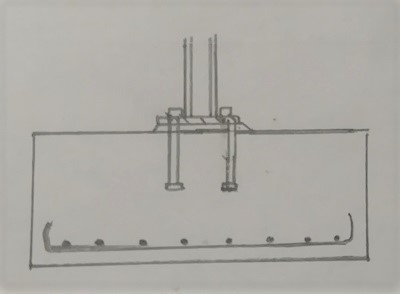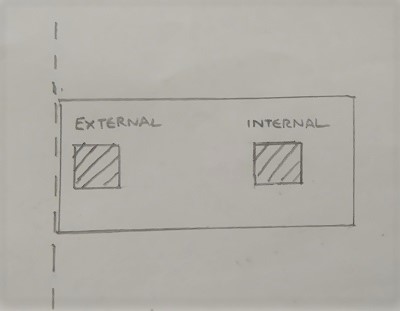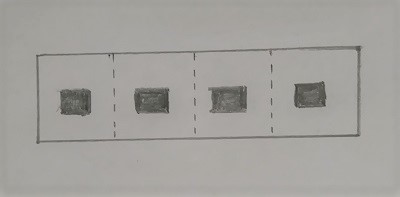Types of pad foundation
Contents |
[edit] Introduction
Pad foundations are a form of spread foundation formed by rectangular, square, or sometimes circular concrete ‘pads’ that support localised single-point loads such as structural columns, groups of columns or framed structures. This load is then spread by the pad to the bearing layer of soil or rock below. Pad foundations can also be used to support ground beams.
There are several different types of pad foundation:
[edit] Plain concrete
Plain concrete pad foundations that do not use reinforcement are an economical solution but only where the applied load will be relatively light. These can also be referred to as footings. The general rule is that the depth of the pad should be equal to the distance from the face of the vertical element to the edge of the pad on both sides.
[edit] Reinforced concrete
The addition of reinforcement allows for relatively wide but shallow pad foundations. In order to make the reinforcing cage easier to construct and place, the pads tend to be designed as a square plan area. The reinforced concrete base is designed to span in one direction, with the main bars longitudinal in the bottom.
Where the width of the base is restricted or where there is eccentric/inclined loading, rectangular pads can be designed.
[edit] Combined column foundations
These are where two pad foundations are combined into a longer one and can be used where the outer column is close to a site boundary or existing wall. The purpose is that the balancing effect of the internal column can be incorporated. The plan shape is usually a rectangle.
[edit] Continuous pad
This is where the pad foundations are combined together as a single long structural element. This is often the case where the pads and the columns they support are closely spaced. By extending the reinforcement between the pads, differential settlement can be resisted and longitudinal stiffness can be improved.
Foundations that cover the entire footprint of a building are generally referred to as 'raft foundations'.
[edit] Pad and ground beam
This is similar to a continuous pad but differs in that smaller isolated pads are connected by ground beams. This helps to improve structural rigidity.
[edit] Find out more
[edit] Related articles on Designing Buildings Wiki
Featured articles and news
A change to adoptive architecture
Effects of global weather warming on architectural detailing, material choice and human interaction.
How big is the problem and what can we do to mitigate the effects?
Overheating guidance and tools for building designers
A number of cool guides to help with the heat.
The UK's Modern Industrial Strategy: A 10 year plan
Previous consultation criticism, current key elements and general support with some persisting reservations.
Building Safety Regulator reforms
New roles, new staff and a new fast track service pave the way for a single construction regulator.
Architectural Technologist CPDs and Communications
CIAT CPD… and how you can do it!
Cooling centres and cool spaces
Managing extreme heat in cities by directing the public to places for heat stress relief and water sources.
Winter gardens: A brief history and warm variations
Extending the season with glass in different forms and terms.
Restoring Great Yarmouth's Winter Gardens
Transforming one of the least sustainable constructions imaginable.
Construction Skills Mission Board launch sector drive
Newly formed government and industry collaboration set strategy for recruiting an additional 100,000 construction workers a year.
New Architects Code comes into effect in September 2025
ARB Architects Code of Conduct and Practice available with ongoing consultation regarding guidance.
Welsh Skills Body (Medr) launches ambitious plan
The new skills body brings together funding and regulation of tertiary education and research for the devolved nation.
Paul Gandy FCIOB announced as next CIOB President
Former Tilbury Douglas CEO takes helm.
UK Infrastructure: A 10 Year Strategy. In brief with reactions
With the National Infrastructure and Service Transformation Authority (NISTA).
Ebenezer Howard: inventor of the garden city. Book review.
Airtightness Topic Guide BSRIA TG 27/2025
Explaining the basics of airtightness, what it is, why it's important, when it's required and how it's carried out.


























